Tides of change: As fish and coral disappear, Palau faces the economic realities of climate change
As Singapore looks to develop initiatives to deal with rising sea levels brought on by climate change, CNA visited the tiny Pacific island nation of Palau where environmental issues are putting the economy under pressure.
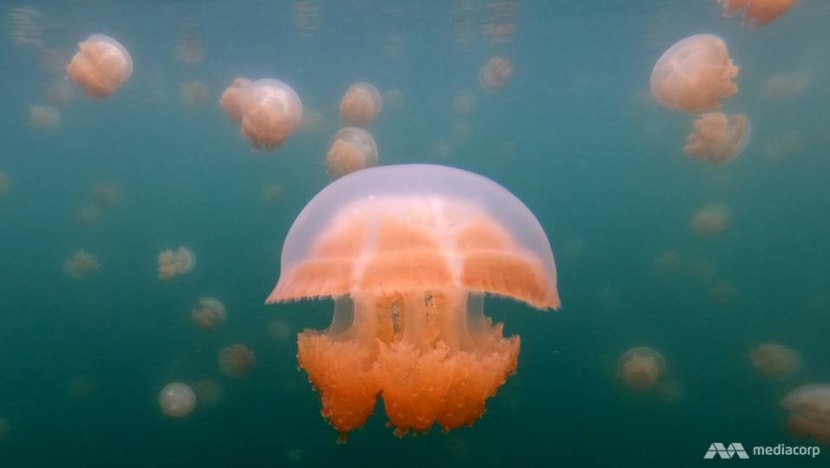
Palau's Jellyfish Lake is one of its main tourist attractions. (Photo: Marcus Mark Ramos)
BABELDAOB, Palau: The placid Pacific shimmers on the horizon.
For centuries, this vast expanse of water has been occasionally blustery, usually blue, always bountiful.
But the days of its benevolence have slowly slipped away. And so too has some of its marine life.
“The species (of fish) are still the same, but the numbers are getting really low … When I go fishing, I don’t see schools of fish, just a few,” reflected part-time fisherman Junior Leeroy, who has made a living from the water for over three decades.
Leeroy and others who catch fish for a living say they know why.
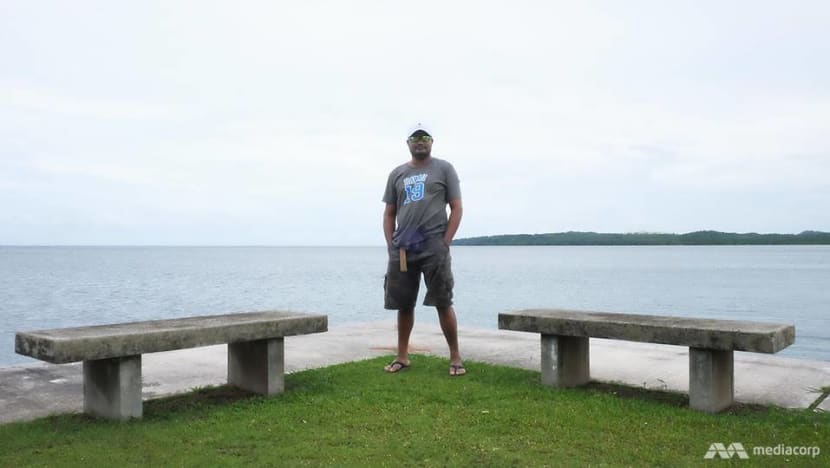
“The corals are dying, you can see it. The fish don’t like to stay in the dead coral - they look for the live coral and go to another area,” he explained.
“I think it’s because of climate change, that’s the reason - I truly believe that."
With hundreds of islands blanketed in thick green sitting in the clear ocean waters, Palau, a three-hour flight from the Philippines' capital of Manila, seems a postcard-perfect paradise.
But the looming spectre of climate change could change all that, its president Tommy Remengesau told CNA.
“Climate change is really the biggest threat to our food security, our economic security, our cultural and social way of life and the security that we enjoy as island people,” he said.
“It's a phenomenon that is real, (and) unfortunately it is affecting the source of food, which is our ocean."
READ: Rising sea levels threaten homes on pristine paradise of Palau
READ: Palau calls on ‘big brothers and sisters’ in the global effort against climate change
"WE SIT DOWN AND SHAKE OUR HEADS"
According to 2019 data from the International Monetary Fund (IMF), Palau’s nominal GDP for the 2016 - 2017 financial year was approximately US$290 million (S$400 million). Within the same year, tourism receipts totalled US$115.8 million.
Tourism activities have been responsible for about three-quarters of Palau’s economic growth, said a 2014 IMF report, with more than 40 per cent of total employment in Palau coming from tourism-related activities. The country typically sees at least 100,000 visitors a year, said government data - more than five times the local population.
When it comes to fisheries, UN data states that the contribution of fisheries to the GDP in 2014 was 2.2 per cent of the national GDP.
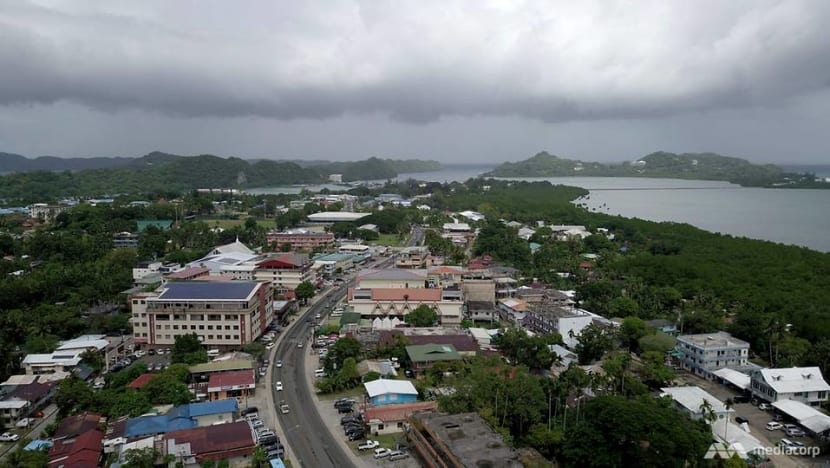
The president said that climate change is changing the terrestrial landscapes of Palau - and the things that help drive the economy: "We have noticed a very drastic change of patterns - drastic change of weather, drastic change of sea level rise, drastic change in the ocean temperature which results in coral bleaching and hence the overall fish population - where they migrate and how they breed."
According to the Intergovernmental Panel on Climate Change, oceans have absorbed more than 90 per cent of the excess heat produced between 1971 to 2010. This warmth is understood to be trapped by greenhouse gases.
For Palau, which boasts breathtaking biodiversity in its marine ecosystems, this spells trouble.
Take coral bleaching, where warmer water causes coral to expel the algae living in their tissues. This could result in the death of the coral, putting at risk the delicate ecosystem of marine life in the surrounding waters that relies on it.
“We are near the tropics - right about the equator. We have a very narrow range of temperatures and so the corals are used to living in that temperature. So even if it is one or 1.5 degrees (celsius) higher …. corals start to bleach,” explained chief executive officer of the Palau International Coral Reef Centre Dr Yimnang Golbuu.

"This increase in temperature is a big issue that we are facing and the models and the predictions are that the bleaching events will become more intense and more frequent ... If we have more frequent bleaching events, then that would be harder for the reefs to recover - it’s not enough (time) to recover.”
With the destruction of this natural habitat comes the loss of marine life, added Palau’s minister of natural resources, environment and tourism Mr F. Umiich Sengebau.
“In the last twenty years, we could go and catch a lot of fish but right now that’s something that we sit down and shake our heads about - what’s going on here?” he said.
“A lot of what’s contributing to the fisheries decline is the (lack of) habitat, and that is caused by climate change. And when you don’t have that habitat, you don’t have its residents there.
“Next time you dive into the crystal blue water, there may be no fish or no corals.”
Recognising the need for conservation, Palau has been proactive.
READ: Tides of change - From fighting against the seas to living with it - How the Netherlands kept itself dry
READ: Tides of change - Amid rising sea levels, the Dutch float new initiatives with farms and more homes on water

In 2009, it set up the world’s first national shark sanctuary, putting an end to all commercial shark fishing within its waters.
Six years later, it designated 80 per cent of its maritime territory as a fully protected marine reserve where activities such as fishing are not allowed to take place. Local fishermen will be able to fish in the remaining area.
At 500,000 sq km, or slightly larger than the US state of California, the sanctuary is being phased in over five years, and will become the sixth-largest fully protected marine area in the world.
This move has been widely supported, as locals understand its long term implications, said Mr Sengebau.
“Fishermen understand that these kinds of areas are important for us to withstand the kind of impact that we are facing on a global scale,” he said.
“We have had studies that have showed that in areas that are protected, we are seeing five times more fish, so that's really helping to repopulate those areas that are open for fishermen to fish.”
‘THE ENVIRONMENT IS OUR ECONOMY’
A soft breeze ripples through the trees, rustling the floral tablecloth anchored by woven baskets bearing a traditional Palauan spread.
Strains of guitar and harmonica accompany the chatter of excited conversations as a group of visitors to Palau tuck in.
This is the new face of tourism in the island nation, and climate change has had a part to play in its formation.
READ: Fending off the floods – 5 things to know about polders and how they could work in Singapore
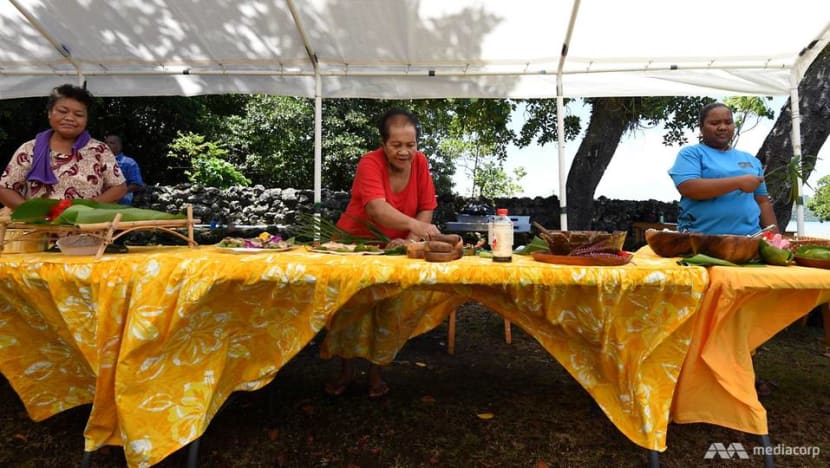
“When tourism started in Palau, it was started by divers and Palau if you’re a diver – it’s a bucket list, it’s one of the places you want to dive,” explained Mr Ngiraibelas Tmetuchl, chairman of the Palau Visitors Authority. “So when the market or tourism started growing, it grew around diving.”
But with Palau’s reefs and ecosystem becoming increasingly affected, there was a need for an alternative option for intrepid travellers - community-based tourism.
Said Mr Tmetuchl: “That concept of not putting all your eggs in one basket came into play. So, what we’re doing now is that we’re moving inland and into the villages. We’re creating lunches like this one and we’re rotating it around so everybody gets a chance to get an overspill of tourism benefits.
“And at the same time we’re creating experiences not related to the water, and in the event something does happen to the water, we’ve got a plan B.”
Take Jellyfish Lake, which is a tourist hotspot nestled in Palau’s Rock Islands. There, visitors can snorkel with thousands upon thousands of harmless jellyfish.
A El Nino weather event followed by a drought in 2016 devastated the jellyfish in the lake. It was officially shut in May 2017, though tour operators and local villagers took the initiative to close it a year earlier.
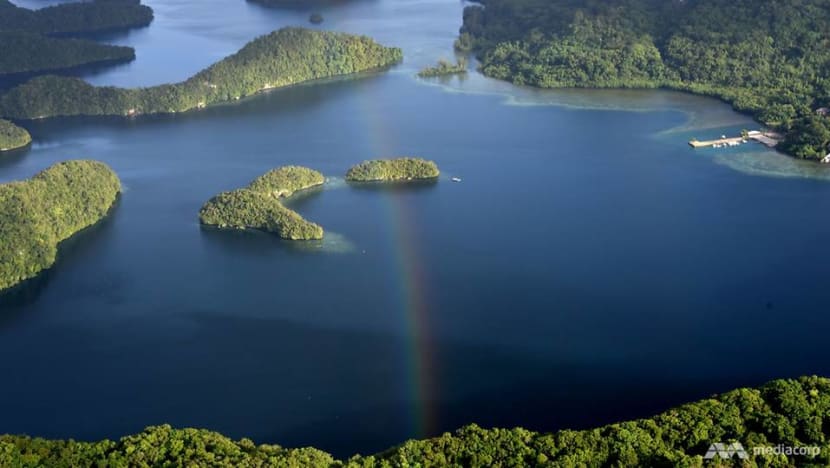
“A lot of tourists come to Palau because this is one of the unique things that we have,” explained Dr Golbuu. “Once they died, the tourists didn’t go to those sites because there was nothing to see and so the economy lost millions of dollars.
“That just shows the impact that climate change has on the economy and the impact on people.”
In the words of Mr Remengesau, the tourism industry is “the mother goose that lays the golden eggs”.
He explained: “For our tourism industry, people come to Palau because of the serenity of the water, the tremendous biodiversity we have. So anytime you see coral bleaching, anytime you see the fish population declining because the habitat is being destroyed - it concerns you, because that’s the industry that you want to protect and promote.
“We're always saying that the environment is our economy and the economy is our environment. They are inseparable and in that way we are very concerned because if climate change destroys our number one asset, then there goes our industry.”
Thus, the one year old programme gives tourists the chance to visit local villages, experience local culture and sample local food.
But as with fish stocks, there are constant reminders that the effects of climate change are never too far away.
Take the taro plant, an important staple for locals. Taro patches close to the sea in Palau have been regularly inundated by sea water.
“The climate change experience we’ve had is that marshland where we grew our taro is now being inundated by ocean,” said Mr Tmetuchl.
“That is affecting what food crop we can produce for these experiences. Some (people) are building sea walls, some of them are looking at how they can transplant and move their farms upward. This is recent, probably lasting ten years (but) it has gotten worse in the past five.
“There were never any issues (in the past)."

But locals remain hopeful to adapt and overcome.
At the coral reef centre, Dr Golbuu is also hard at work.
Along with partners from Stanford University in the US and Newcastle University in the UK, his team have begun research to identify coral able to survive in warmer waters and to study if they can be bred. It is a "band-aid" to a much bigger problem, but he is determined to do his part.
"I'm not one of those who think it doesn’t matter what you do because everything is going to be destroyed," Dr Golbuu said.
"I believe that these are big issues but there’s research that we need to look at, that maybe we can learn something that can help us ... I always have hope.”














